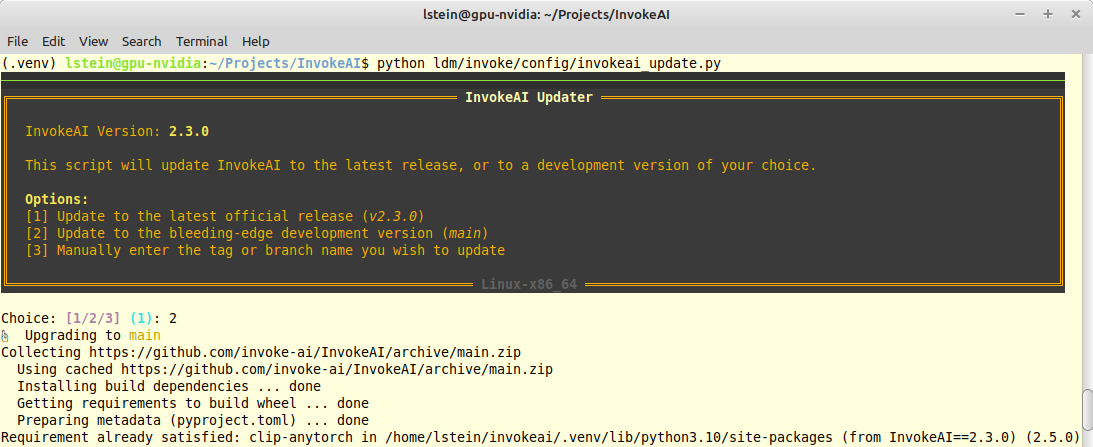In theory, this reduces peak memory consumption by doing the conditioned
and un-conditioned predictions one after the other instead of in a
single mini-batch.
In practice, it doesn't reduce the reported "Max VRAM used for this
generation" for me, even without xformers. (But it does slow things down
by a good 18%.)
That suggests to me that the peak memory usage is during VAE decoding,
not the diffusion unet, but ymmv. It does [improve things for gogurt's
16 GB
M1](https://github.com/invoke-ai/InvokeAI/pull/2732#issuecomment-1436187407),
so it seems worthwhile.
To try it out, use the `--sequential_guidance` option:
2dded68267/ldm/invoke/args.py (L487-L492)
- Adds an update action to launcher script
- This action calls new python script `invokeai-update`, which prompts
user to update to latest release version, main development version, or
an arbitrary git tag or branch name.
- It then uses `pip` to update to whatever tag was specified.
The user interface (such as it is) looks like this:

- The TI script was looping over all files in the training image
directory, regardless of whether they were image files or not. This PR
adds a check for image file extensions.
-
- Closes#2715
- Fixes longstanding bug in the token vector size code which caused .pt
files to be assigned the wrong token vector length. These were then
tossed out during directory scanning.
- Fixes longstanding bug in the token vector size code which caused
.pt files to be assigned the wrong token vector length. These
were then tossed out during directory scanning.
- Fixed the test for token length; tested on several .pt and .bin files
- Also added a __main__ entrypoint for CLI.py, to make pdb debugging a
bit more convenient.